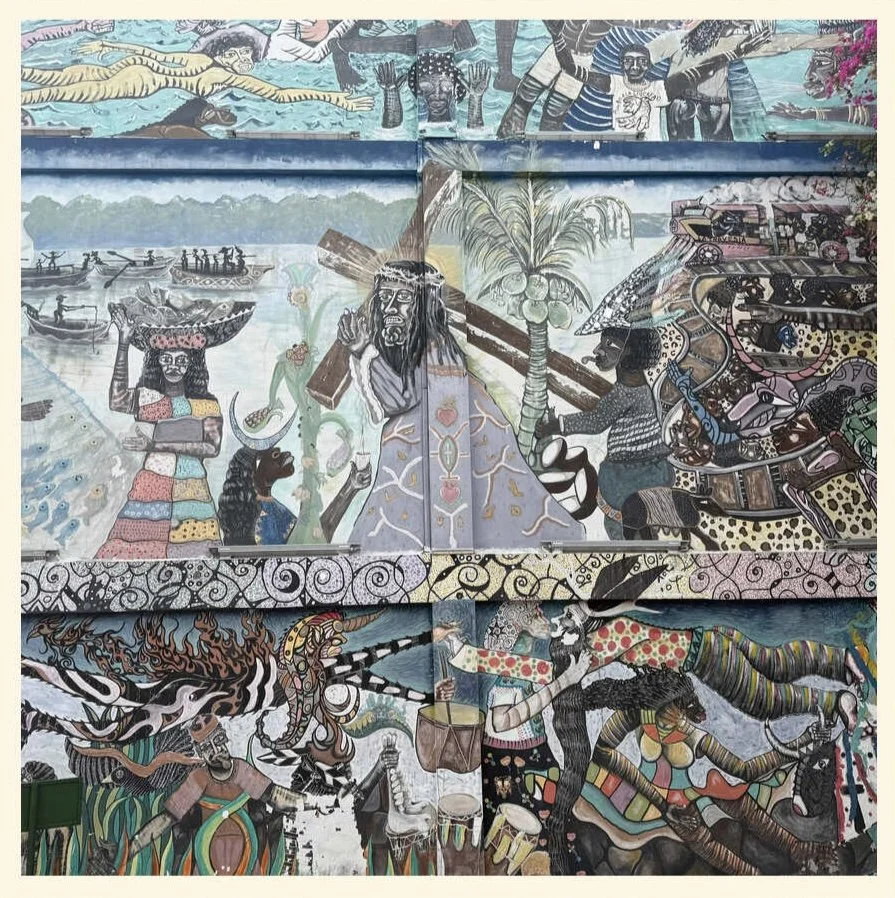 Image 1 of 2
Image 1 of 2

 Image 2 of 2
Image 2 of 2



LIVING IN THE PAST
Living in the Past isn’t just an album—it’s a voice resurrected from history, a drumbeat carried through centuries, and a mirror that refuses to let us look away. The project was born to uplift Black culture, but it does so with more than rhythm—it breathes, it remembers, it heals. Every track is tuned to a frequency designed not just to be heard, but to be felt—sonic medicine carved into African drums, layered with truth and resistance.
Ironically, the past we try so hard to escape is the very ghost that walks beside us. From the violence in our neighborhoods to the social norms we inherit without question, Living in the Past forces us to confront the chains that were never willingly worn. The album itself rebels against the false narrative that “slavery was a choice”—because no soul chooses shackles. The ancestors’ pain leaks through every bar, every metaphor, every breath, reminding us that their fight was not for us to run, but to rise.
The album begins with “Don’t”, a skit that personifies time itself—dragging the listener from the fields where chains rattled, to the streets where sirens wail. The chase is the same, the oppressor wears a different badge, but the message is clear: stop running, stand tall, and resist. By the final track, “Influence”, the album turns its gaze directly at you—the listener—asking not if oppression exists, but how you will face it.
And here’s the irony: Living in the Past demands to be replayed. Every loop is intentional, because breaking the cycle of systemic oppression requires breaking the loop itself. The music refuses to let history repeat—but only if you choose to listen differently.
This is more than Hip Hop. This is rebellion with a heartbeat, wisdom with a rhythm, and history refusing to be silent.
Living in the Past isn’t just an album—it’s a voice resurrected from history, a drumbeat carried through centuries, and a mirror that refuses to let us look away. The project was born to uplift Black culture, but it does so with more than rhythm—it breathes, it remembers, it heals. Every track is tuned to a frequency designed not just to be heard, but to be felt—sonic medicine carved into African drums, layered with truth and resistance.
Ironically, the past we try so hard to escape is the very ghost that walks beside us. From the violence in our neighborhoods to the social norms we inherit without question, Living in the Past forces us to confront the chains that were never willingly worn. The album itself rebels against the false narrative that “slavery was a choice”—because no soul chooses shackles. The ancestors’ pain leaks through every bar, every metaphor, every breath, reminding us that their fight was not for us to run, but to rise.
The album begins with “Don’t”, a skit that personifies time itself—dragging the listener from the fields where chains rattled, to the streets where sirens wail. The chase is the same, the oppressor wears a different badge, but the message is clear: stop running, stand tall, and resist. By the final track, “Influence”, the album turns its gaze directly at you—the listener—asking not if oppression exists, but how you will face it.
And here’s the irony: Living in the Past demands to be replayed. Every loop is intentional, because breaking the cycle of systemic oppression requires breaking the loop itself. The music refuses to let history repeat—but only if you choose to listen differently.
This is more than Hip Hop. This is rebellion with a heartbeat, wisdom with a rhythm, and history refusing to be silent.